- Home
- Identifying birds
- Woodland Birds
Woodland Birds on a Spring Walk: A Quiet Encounter with Nature’s Songsters
The woods were quiet but full of promise of woodland birds.
It was early spring — the air still held a chill, but sunlight filtered through bare branches, and the first green shoots were beginning to stretch up from the forest floor.
Roger and I hadn’t gone far when I heard it — a simple, repetitive phrase floating through the trees like a tiny herald of the season.
I stopped, tilted my head, and smiled.
The chiffchaff was back.
Listening for the Chiffchaff
The call came again — a cheerful, two-note rhythm that always makes me stop and smile.
“Listen!” I whispered, gently tapping Roger’s arm. “Hear that?”
He paused, tilting his head.
“That’s a chiffchaff. It literally sings its own name — chiff-chaff, chiff-chaff. It’s one of the first birds to return in spring.”
A moment later, I spotted it high in a nearby tree. An olive-green flicker against the branches.
“There,” I pointed. “That’s him. A palm-sized traveller from Africa, announcing that spring is officially here.”
Roger gave me a half-smile. “Only you would get this excited about a bird repeating itself.”
I laughed. “Well… it’s a pretty good opening act.”
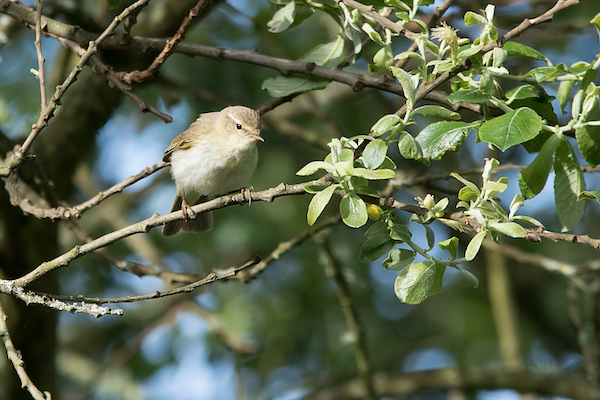 A Chiffchaff in the spring canopy—often heard before it’s seen, with its simple “chiff-chaff” call echoing through the woods
A Chiffchaff in the spring canopy—often heard before it’s seen, with its simple “chiff-chaff” call echoing through the woods🛠️ Want To Learn More?
Identifying Woodland Birds by Sound
We walked on, the chiffchaff’s song fading behind us.
Then another sound caught my ear — a fast rhythmic tapping, sharp and hollow, echoing through the trees.
I paused. “That’s a great spotted woodpecker.”
Roger glanced around. “I don’t see anything.”
“You’ll hear them before you see them,” I said. “They drum on tree trunks with their bills to mark their territory — like knocking on wood to say, ‘this bit’s mine.’”
Right on cue, a quick burst of drumming rang out across the clearing. Roger grinned. “Surprised they don’t get a headache doing that.”
I smiled. “Their skulls act like shock absorbers. Perfectly evolved for percussion.”
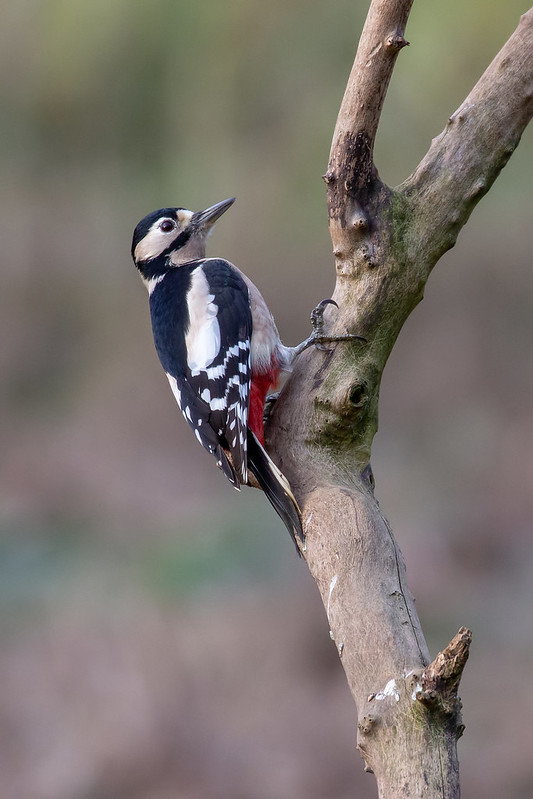 A female Great Spotted Woodpecker, with black, white, and red plumage, but no red patch on the head.
A female Great Spotted Woodpecker, with black, white, and red plumage, but no red patch on the head.We stood still, scanning the trees, until I caught a flash of black and white, trimmed in red.
“There! That’s the male — see the red patch on the back of his head?”
Roger followed my gaze. “Nature’s drummer in full regalia.”
🪶 Discover more about bird's plumage
Recognising the Song Thrush
We’d barely gone a few more steps when a clear, fluting song rang out through the trees. Then it came again — and again.
The same phrase, repeated three times before changing to a new one.
“Song thrush,” I whispered, pausing beneath a sycamore. “They repeat each line like a verse — it’s how you can tell them apart from blackbirds.”
Roger tilted his head, listening. “It’s like a mixtape.”
I smiled. “They’re the composers of the woodland. Each one has its own repertoire — some have over a hundred variations.”
He scanned the branches. “Can you see it?”
“Up there.” I pointed to a thick branch high overhead, where the bird perched proudly, chest puffed, casting his music into the air like sunlight.
Even from a distance, I could make out the pale underside speckled with bold, dark arrowhead-shaped markings — like tiny ink blots painted haphazardly across his chest.
We stood for a moment, listening to the rhythm of the woodland change around us.
“That,” I said, “is the sound of spring finding its voice.”
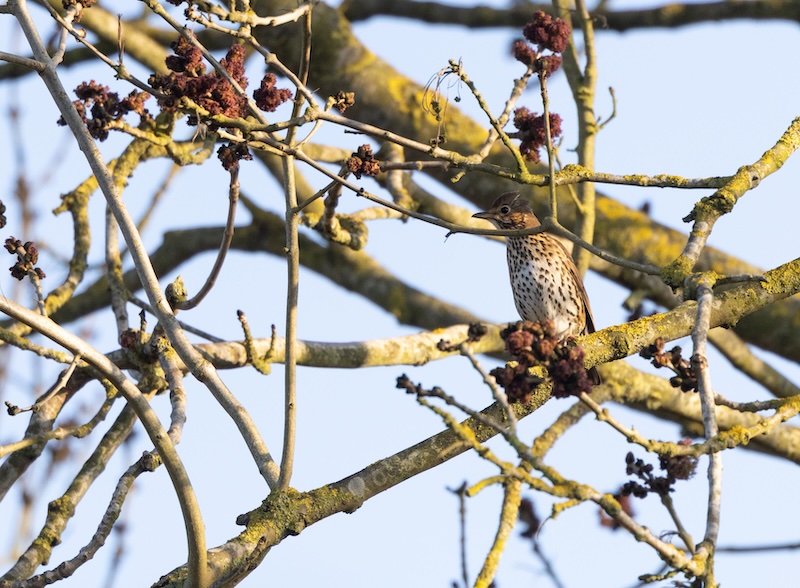 Song Thrushes often sing from high perches. This one was tucked into a tangle of branches, its speckled chest glowing in the morning light.
Song Thrushes often sing from high perches. This one was tucked into a tangle of branches, its speckled chest glowing in the morning light.Woodland Bird Behaviour: The Agile Nuthatch
We paused by an old oak, its bark furrowed deep with age, and spotted a sapling ahead when a sudden flicker of movement caught my eye.
“Wait,” I whispered, touching Roger’s arm. “A nuthatch.”
He followed my gaze as a small bird, blue-grey back with peach underneath, darted down the trunk — headfirst.
“Most birds climb up,” he said. “That one’s doing the opposite.”
I nodded. “That’s what makes them special. Nuthatches are the only British bird that can climb down tree trunks like that. Total woodland acrobats.”
The nuthatch paused for a moment, clinging sideways with ease. Its black eye-stripe gave it a masked look — part bandit, part superhero.
Just then, its sharp ‘hweet-hweet’ call echoed through the trees before it vanished into a tangle of branches.
Roger smiled. “You really don’t miss a thing, do you?”
I shrugged, still watching the tree. “It helps to look twice.”
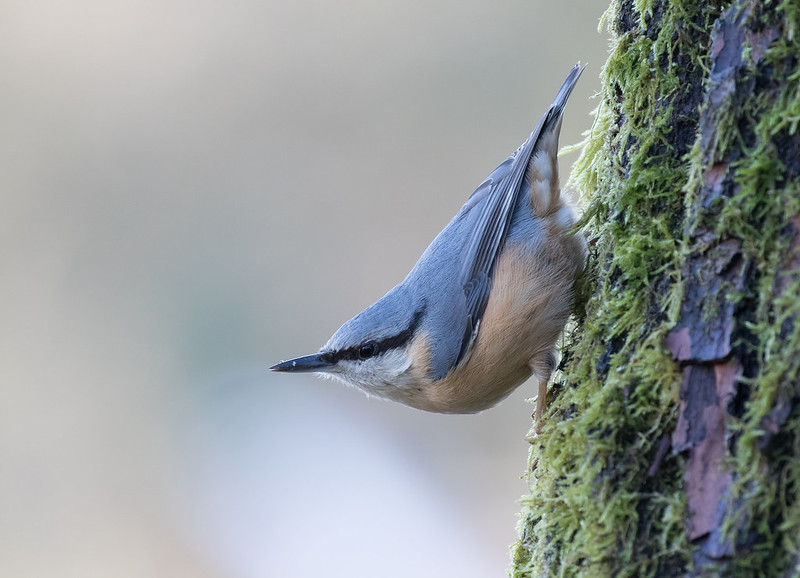 Unlike most birds, Nuthatches often climb down trees headfirst. It's a behaviour that sets them apart—and makes them a joy to spot on a woodland walk.
Unlike most birds, Nuthatches often climb down trees headfirst. It's a behaviour that sets them apart—and makes them a joy to spot on a woodland walk.📍 Where I’ve seen nuthatches
I’ve often spotted them at Barnwell Country Park in Northamptonshire.
Britain’s Smallest Bird: The Goldcrest
The woodland canopy opened slightly, letting light filter down in dusty beams. I raised my binoculars and scanned the higher branches.
“Remember that day at Spurn Head?” I asked, nudging Roger. “When we watched the volunteer ring the goldcrest?”
He laughed. “The one that fit inside a film canister?”
“Exactly,” I smiled. “Britain’s smallest bird. Just five grams — lighter than a pound coin.”
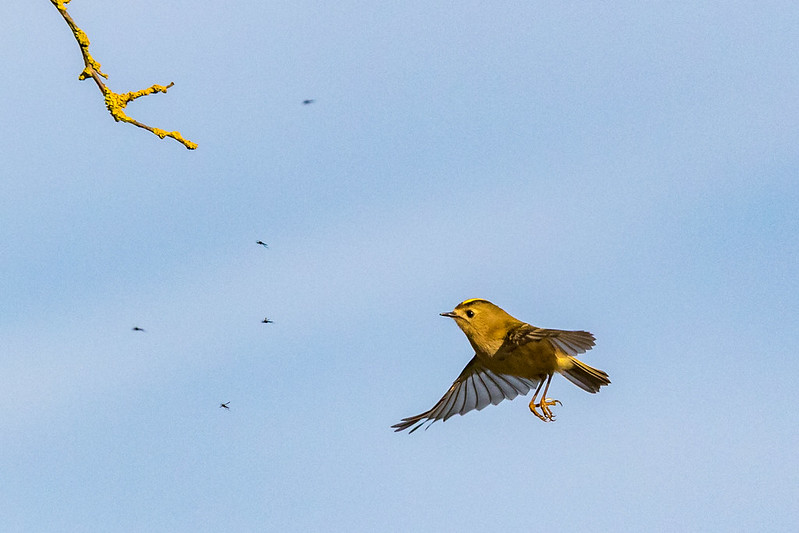 A Goldcrest caught mid-air, foraging on the wing. The smallest British bird—but full of energy, precision, and intent. I was delighted to capture this moment on camera.
A Goldcrest caught mid-air, foraging on the wing. The smallest British bird—but full of energy, precision, and intent. I was delighted to capture this moment on camera.A flicker of movement caught my eye. “There!”
A tiny blur darted between twigs, pausing to hang upside down from a larch branch. It picked delicately at the undersides of leaves with a needle-fine bill, its golden crown catching the light for just a second — like a spark.
“They’re surprisingly hardy,” I whispered. “They build spherical nests from moss and hair, bound together with spider silk. Hidden in the branches, like something from a fairytale.”
Roger lowered his voice. “And somehow that little thing survives the winter?”
I nodded, still watching. “Some stay here all year while others arrive from Scandanavia in the autumn.”
The goldcrest vanished as quickly as it had appeared, leaving the air still and quiet again.
The Magic of Woodland Birds
A breeze stirred the canopy above, leaves that were just beginning to unfurl.
The birds had grown quiet, and the woodland seemed to exhale — calm again.
We wandered back toward the path. I looked at Roger, and he smiled — that kind of soft, knowing smile that meant he’d felt it too.
It hadn’t been a long walk. We hadn’t gone far from home.
But we’d heard the chiffchaff call in spring, a woodpecker hammer its rhythm into bark, watched a nuthatch climb downward like it had its own set of rules, and listened as a song thrush turned the air into music.
And for just a moment, we’d followed a goldcrest — bright crown flashing — as it danced through the treetops, lighter than a breath.
And that was enough.
Because sometimes, the magic of the woods isn’t about how much you see — it’s about how still you’re willing to be.
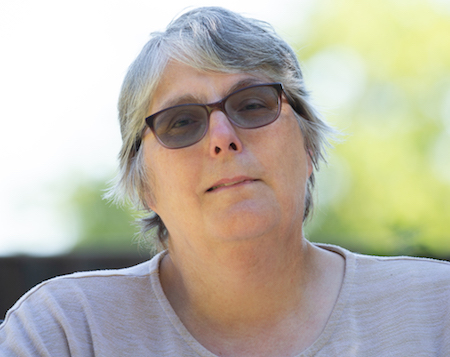
About the Author
Carol is a UK-based wildlife photographer and nature writer with a passion for peaceful walks, patient observation, and capturing life’s quiet wonders.
Through her lens and words, she shares the stories of the natural world — from bluebells and butterflies to birds like the great crested grebe.
Get closer to UK nature
Subscribe to Wild Lens!
Want to discover more hidden walks and wildlife moments?
I’d love to share my latest nature finds, photo tips, and peaceful walk recommendations with you.
💌 Join my newsletter Wild Lens—it’s free, occasional, and always rooted in a love of the natural world.
Subscribe below and come exploring with me.




